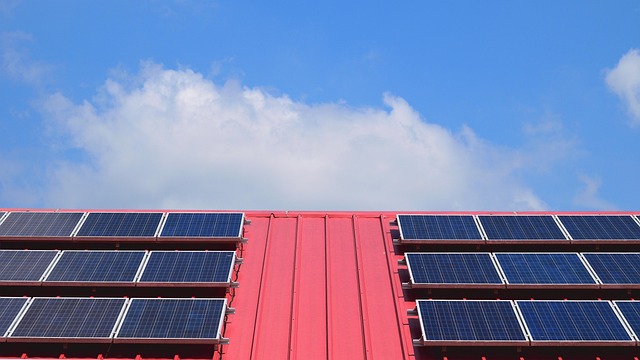Empowering Communities: How Solar Panels Foster Energy Independence
The quest for energy independence has never been more critical as communities seek sustainable solutions to reduce their reliance on fossil fuels. Solar panels, as a renewable energy source, have emerged as a beacon of hope in this effort. By transitioning to solar energy, communities not only take control of their energy production but also pave the way for a sustainable future. This article explores how solar panels empower communities, foster energy independence, and contribute to a cleaner, greener planet.
The Rise of Solar Energy
In recent years, solar energy has experienced explosive growth. Once considered a niche market, it has rapidly become a mainstream source of power, with significant technological advancements and decreasing costs. Solar panels harvest sunlight and convert it into electricity, allowing individuals and communities to generate their own power. This democratization of energy is key to fostering energy independence.
Solar power has gained traction for several reasons:
- Environmental Benefits: Solar energy is clean and renewable, significantly reducing carbon emissions and other pollutants that contribute to climate change.
- Economic Advantages: The cost of solar panels has decreased dramatically, making solar energy more accessible to both individuals and communities. Furthermore, solar installations can lead to job creation in manufacturing, installation, and maintenance sectors.
- Technological Innovations: Ongoing advancements in solar technology have resulted in more efficient panels and energy storage systems, enhancing the viability of solar power as a primary energy source.
- Government Incentives: Many governments offer financial incentives, tax credits, and rebates to encourage the adoption of solar energy, making it even more affordable for communities.
Understanding Energy Independence
Energy independence refers to the ability of a community or nation to meet its energy needs without relying excessively on external sources. This principle not only encompasses the generation of energy but also its management and distribution. By adopting solar technology, communities cultivate resilience against global energy market fluctuations and geopolitical tensions that can disrupt energy supplies.
Energy independence fosters local control over energy resources, which is particularly empowering for marginalized or underserved communities. For these groups, solar energy offers a path to self-sufficiency, allowing them to take charge of their energy consumption and production.
Case Studies: Communities Leading the Solar Charge
Numerous communities worldwide have successfully harnessed solar energy to fortify their independence. These case studies highlight the transformative power of solar energy at the community level.
1. The Community Solar Initiatives in Minnesota
The state of Minnesota has embraced community solar programs that allow residents to invest in shared solar farms. This model is particularly beneficial for those unable to install solar panels on their rooftops due to space, financial limitations, or structural issues. The community solar initiative has empowered residents to save on electricity bills while contributing to clean energy generation. It has also ignited local economic growth through job creation in solar installations.
2. Solar-Powered Microgrids in Puerto Rico
In the wake of the devastating hurricanes in 2017, Puerto Rico has turned to decentralized microgrids powered by solar energy. These microgrids provide localized energy solutions, allowing communities to be less reliant on the centralized power grid. By installing solar panels and energy storage systems, many areas have regained power more quickly after outages and reduced their vulnerability to future disruptions.
3. Solar Energy in Rural Africa
In parts of rural Africa, access to electricity remains a challenge. However, solar energy projects funded by non-profits and community organizations are rapidly changing the landscape. For instance, solar home systems and microgrid installations in villages provide families with reliable electricity for lighting and appliances, removing barriers to education and economic opportunity. These initiatives empower communities, allowing them to break free from the cycle of poverty.
The Socioeconomic Impact of Solar Energy Adoption
The transition to solar energy extends beyond mere energy production and consumption; it also has profound socioeconomic implications for communities. Some of the key benefits include:
Job Creation
The solar industry is a burgeoning sector that creates a wide array of jobs, from manufacturing and installation to maintenance and technology development. As communities adopt solar energy, they can foster local job growth and reduce unemployment rates, helping to stimulate local economies.
Lower Energy Costs
Solar energy can significantly lower energy costs for households and businesses. Once the initial investment in solar panels is made, the cost of generating electricity drops drastically, leading to long-term savings. As more communities transition to solar, they are better positioned to manage energy expenses, leading to economic stability.
Enhanced Energy Security
Solar panels provide communities with a reliable source of electricity, decreasing dependence on external energy suppliers. This enhanced energy security is particularly crucial for regions vulnerable to natural disasters and geopolitical disputes, as it ensures a steady supply of power even during crises.
Community Development
As they invest in solar energy, communities often witness broader development initiatives. Improved access to reliable energy fosters opportunities in education, healthcare, and local businesses, creating a ripple effect that enhances overall community well-being and vibrancy.
Challenges to Solar Energy Adoption
Despite its many benefits, the widespread adoption of solar energy is not without challenges. Barriers such as initial cost, lack of awareness, and regulatory hurdles can hinder communities from transitioning to solar power. Some of the most significant challenges include:
High Initial Costs
The upfront investment required for solar panels and installation can be a significant hurdle for many communities, particularly in low-income areas. Although costs have decreased, financing options and incentives can be critical in overcoming this barrier.
Policy and Regulatory Barriers
Government regulations can sometimes impede the progress of solar energy initiatives. Zoning restrictions, permitting processes, and utility interconnection policies may pose challenges for communities looking to invest in solar. Navigating these policies can be complex and time-consuming, requiring collaboration between stakeholders.
Lack of Awareness and Education
Many communities may not fully understand the benefits of solar energy or how to integrate it into their energy systems. Lack of awareness can stall adoption rates. Educational programs and outreach efforts are essential to inform communities about solar energy’s potential and encourage investment.
Fostering Solar Adoption: Strategies for Communities
To effectively harness the power of solar energy and promote energy independence, communities can adopt several strategies:
Promote Education and Awareness
Implementing educational campaigns can help demystify solar technology and its benefits. Workshops, presentations, and community forums can empower residents to make informed decisions about solar adoption.
Develop Financing Solutions
Creating accessible financing options, such as low-interest loans or community solar programs, can reduce the financial barrier for residents interested in solar energy. Collaborations with local financial institutions and government agencies can facilitate these programs.
Engage with Local Governments
Communities can work with local officials to advocate for policies that support solar adoption. Streamlining permitting processes, offering tax incentives, or establishing solar-friendly zoning practices can foster a more supportive environment for solar energy initiatives.
Collaborate with Non-Profits and Organizations
Partnerships with non-profits and advocates in the renewable energy space can provide essential support and resources for communities looking to adopt solar energy. These organizations often bring expertise, funding, and advocacy experience that can greatly benefit local initiatives.
The Future of Solar Energy and Community Empowerment
The future of solar energy is bright as technology continues to evolve and the global demand for clean energy grows. As communities embrace solar power, they not only work towards energy independence but also contribute to a phenomenon that is reshaping the energy landscape: the decentralization of energy production.
This shift towards decentralized energy systems enhances resilience and sustainability while empowering communities to take charge of their energy futures. In a world increasingly threatened by climate change and environmental degradation, solar panels present an opportunity for communities to lead the charge towards a more sustainable existence.
In conclusion, the integration of solar panels represents a critical step towards empowering communities and fostering energy independence. By harnessing the sun’s abundant energy, communities can break free from stereotypes of energy consumption, catalyze economic development, and enhance their resilience. As the global narrative increasingly focuses on sustainability, communities investing in solar energy position themselves not only as pioneers of change but also as leaders in the global fight against climate change.



